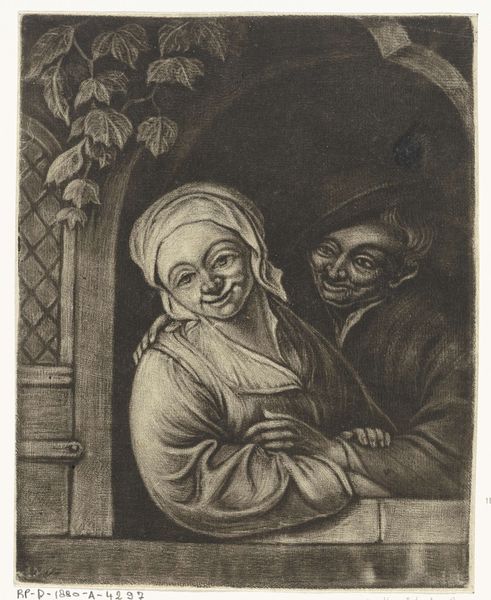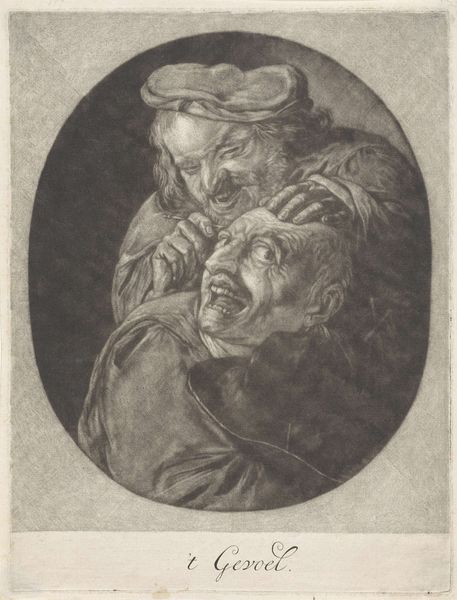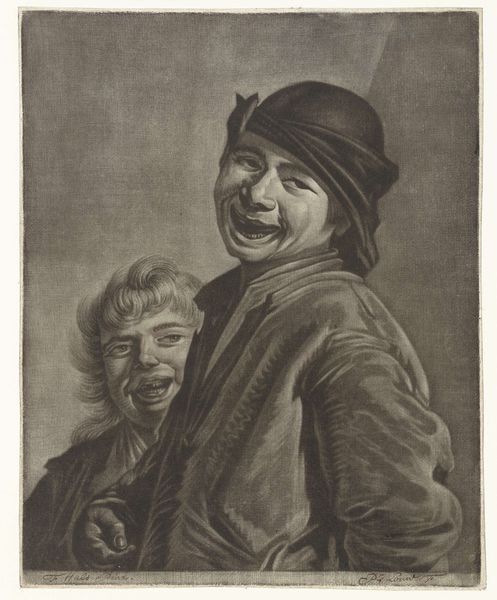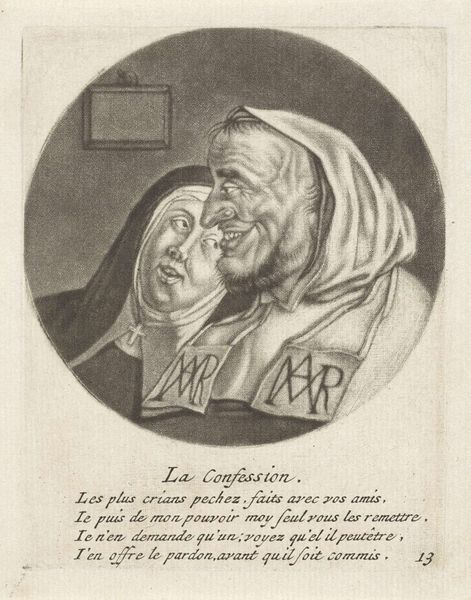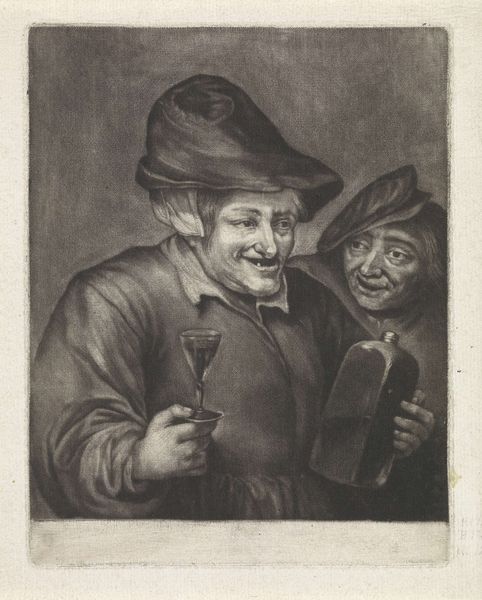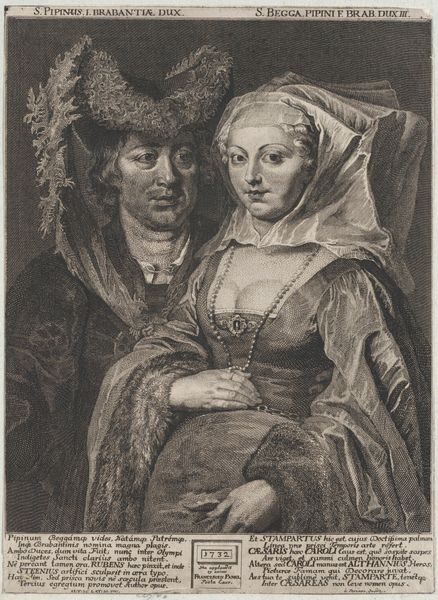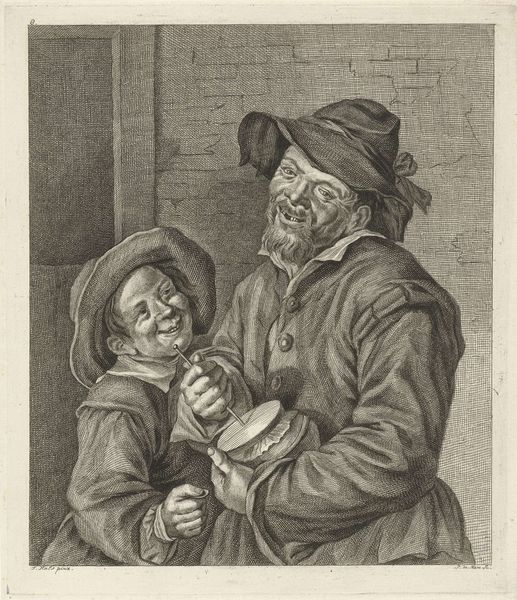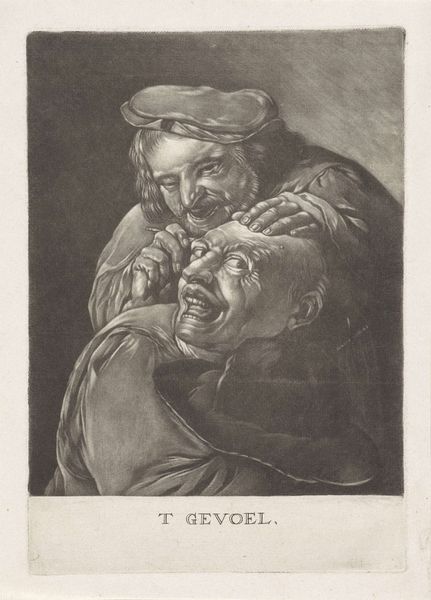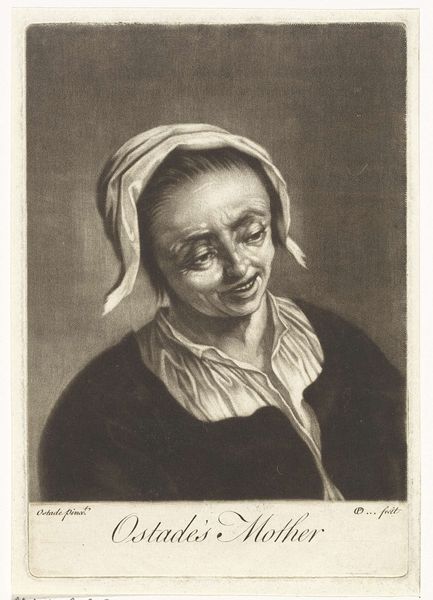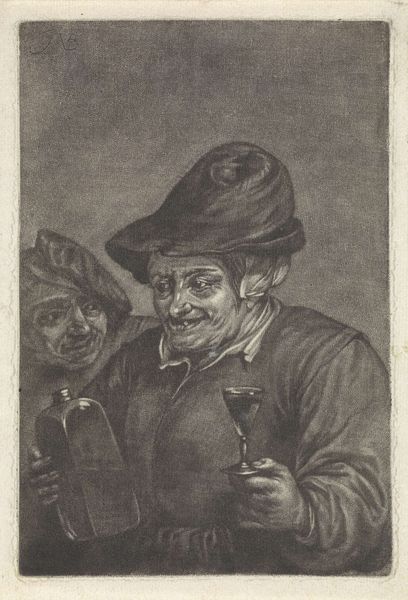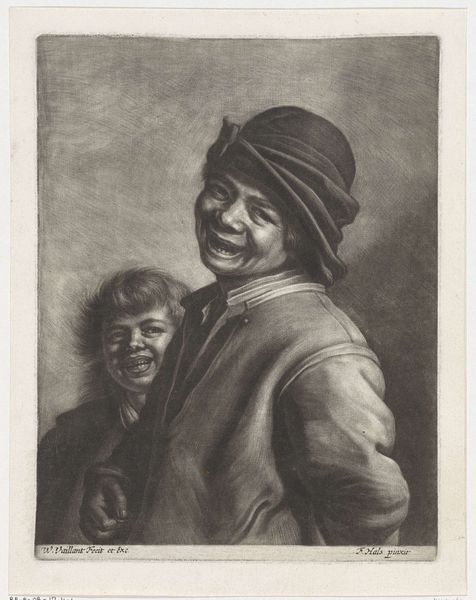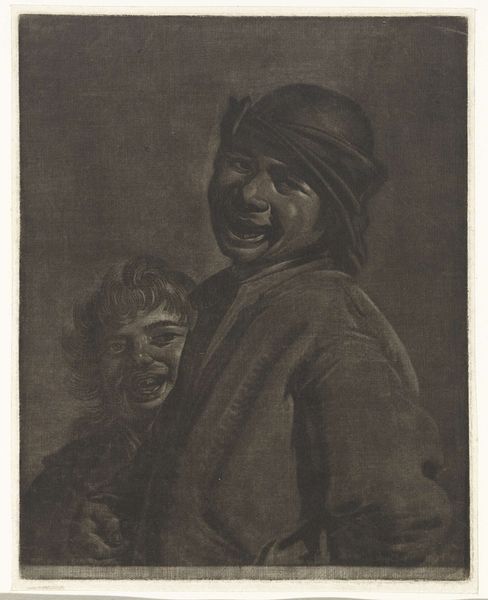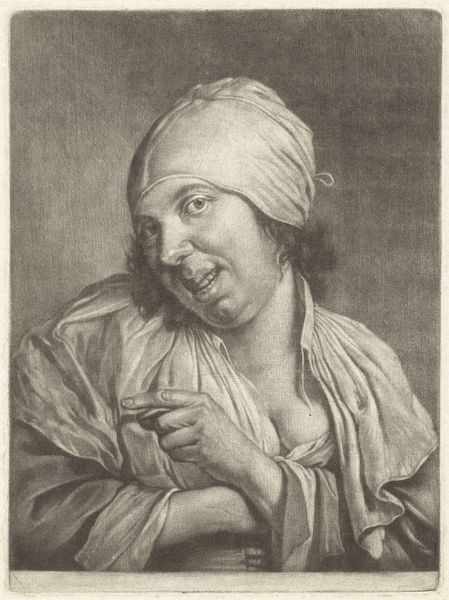
drawing, print, etching
#
portrait
#
drawing
#
facial expression drawing
#
low key portrait
#
portrait image
#
dutch-golden-age
# print
#
etching
#
portrait reference
#
group-portraits
#
animal drawing portrait
#
portrait drawing
#
genre-painting
#
facial portrait
#
portrait art
#
fine art portrait
#
digital portrait
Dimensions: height 144 mm, width 108 mm
Copyright: Rijks Museum: Open Domain
Editor: This is “Lachend paar,” or “Laughing Couple,” an etching made sometime between 1734 and 1785 and currently held at the Rijksmuseum. It's… well, they’re certainly laughing! It’s a pretty striking image, kind of raw in its depiction. What do you see in this piece? Curator: What strikes me is how this seemingly simple portrait offers a window into 18th-century Dutch society and its attitudes towards, perhaps, the 'everyday.' These aren’t idealized figures from mythology, but rather individuals rendered with a striking lack of pretense. But what does their laughter signify? Is it joyous camaraderie or something more complex, maybe even subtly subversive? Think about the burgeoning Enlightenment ideals questioning social hierarchies. Does this unidealized representation challenge established norms through its very visibility? Editor: That's interesting. I hadn’t considered the potential subversiveness. The subjects don’t really seem like wealthy aristocrats to me, just… common people. Does this indicate a shift in who was deemed worthy of representation at the time? Curator: Precisely! The rise of the middle class created a new market for art that reflected their own lives and values. But beyond simply documenting their existence, how do you think an image like this functions politically? Editor: Hmmm... perhaps by simply presenting a slice of life outside the realm of the elite, it subtly democratizes representation itself. Like, "hey, these people matter too". Curator: Exactly! The act of portraying ordinary people with such directness, without the veil of allegory or classicism, asserts their presence and, in a way, their importance. It asks us to consider who is seen and who is rendered invisible. Editor: I hadn't thought about it that way before. So, it's more than just a funny picture; it's a statement about visibility and social status. Curator: Absolutely. Art often operates on multiple levels. Exploring the social and historical context unlocks deeper meanings within the image itself. Editor: This really broadens my understanding of 18th-century portraiture. Thanks for pointing out those aspects!
Comments
No comments
Be the first to comment and join the conversation on the ultimate creative platform.
